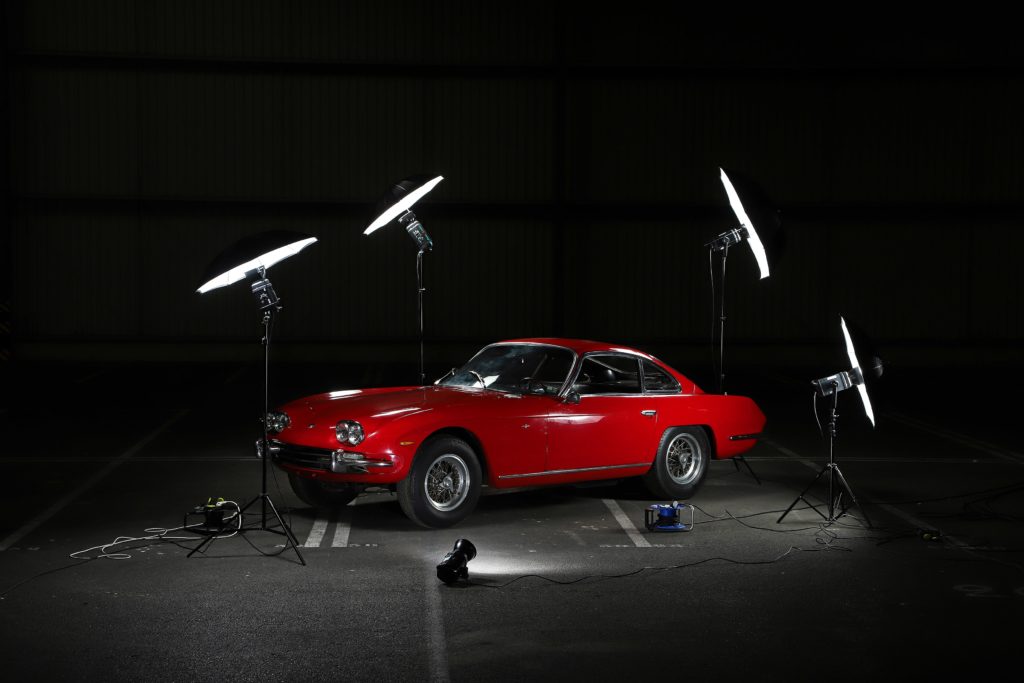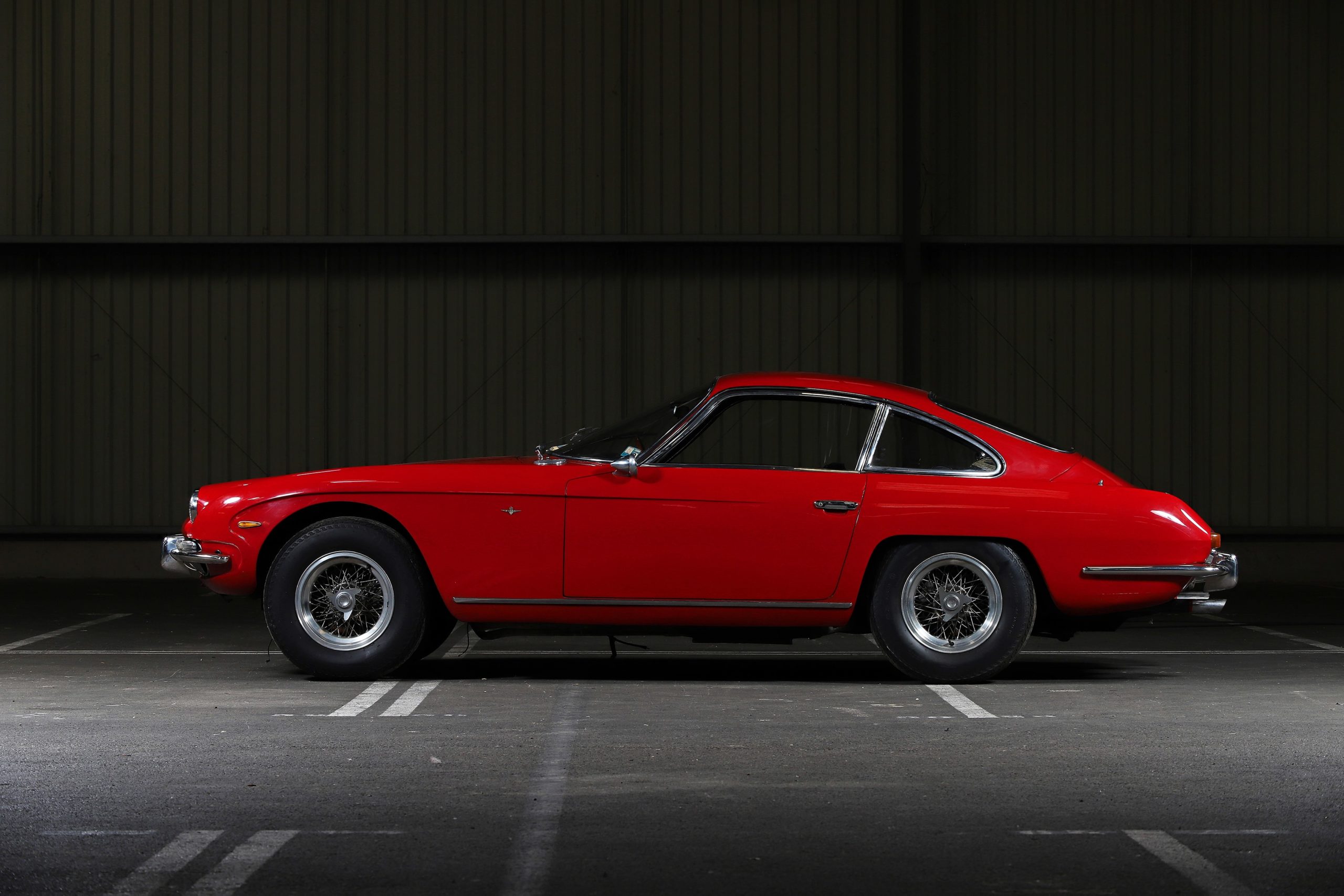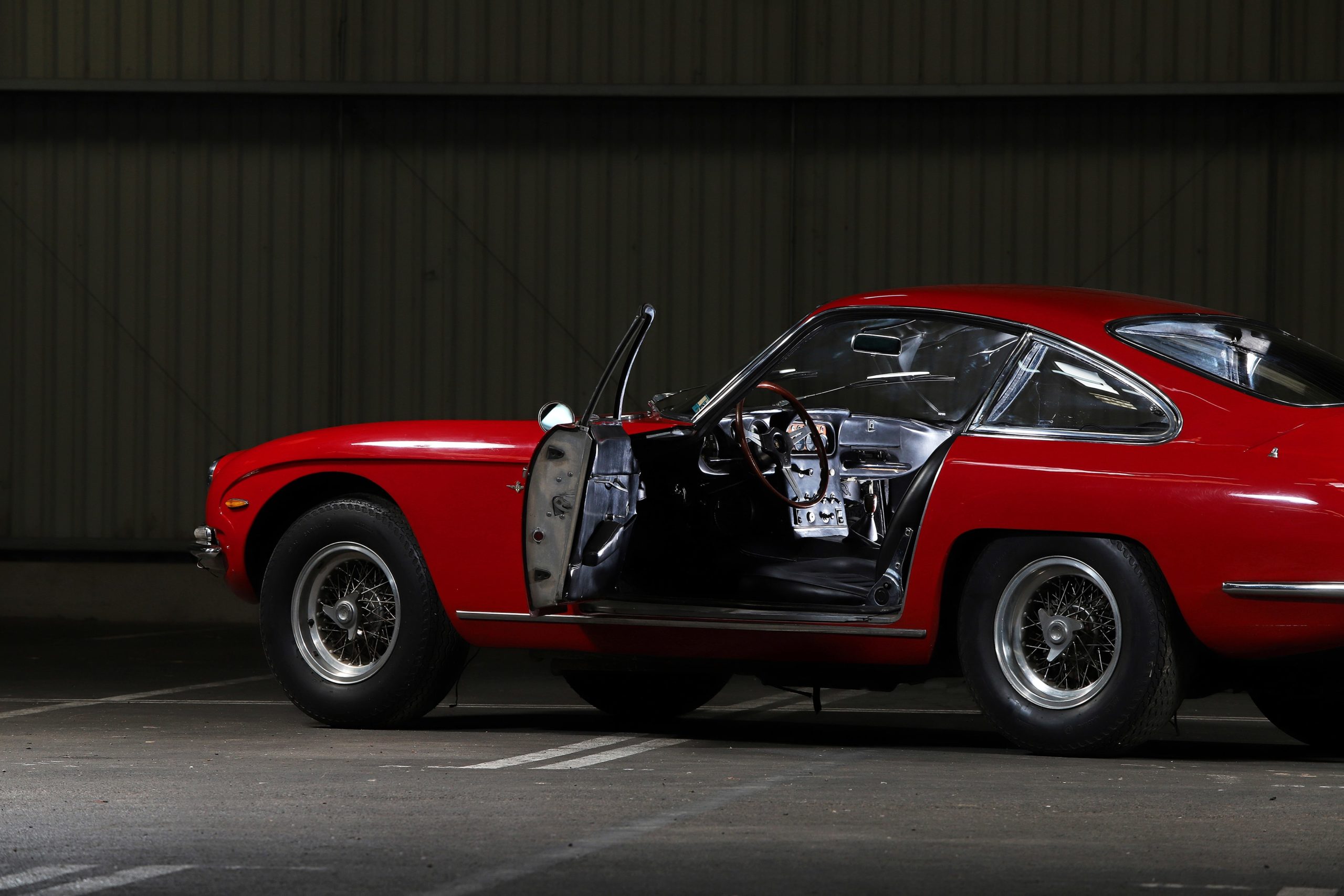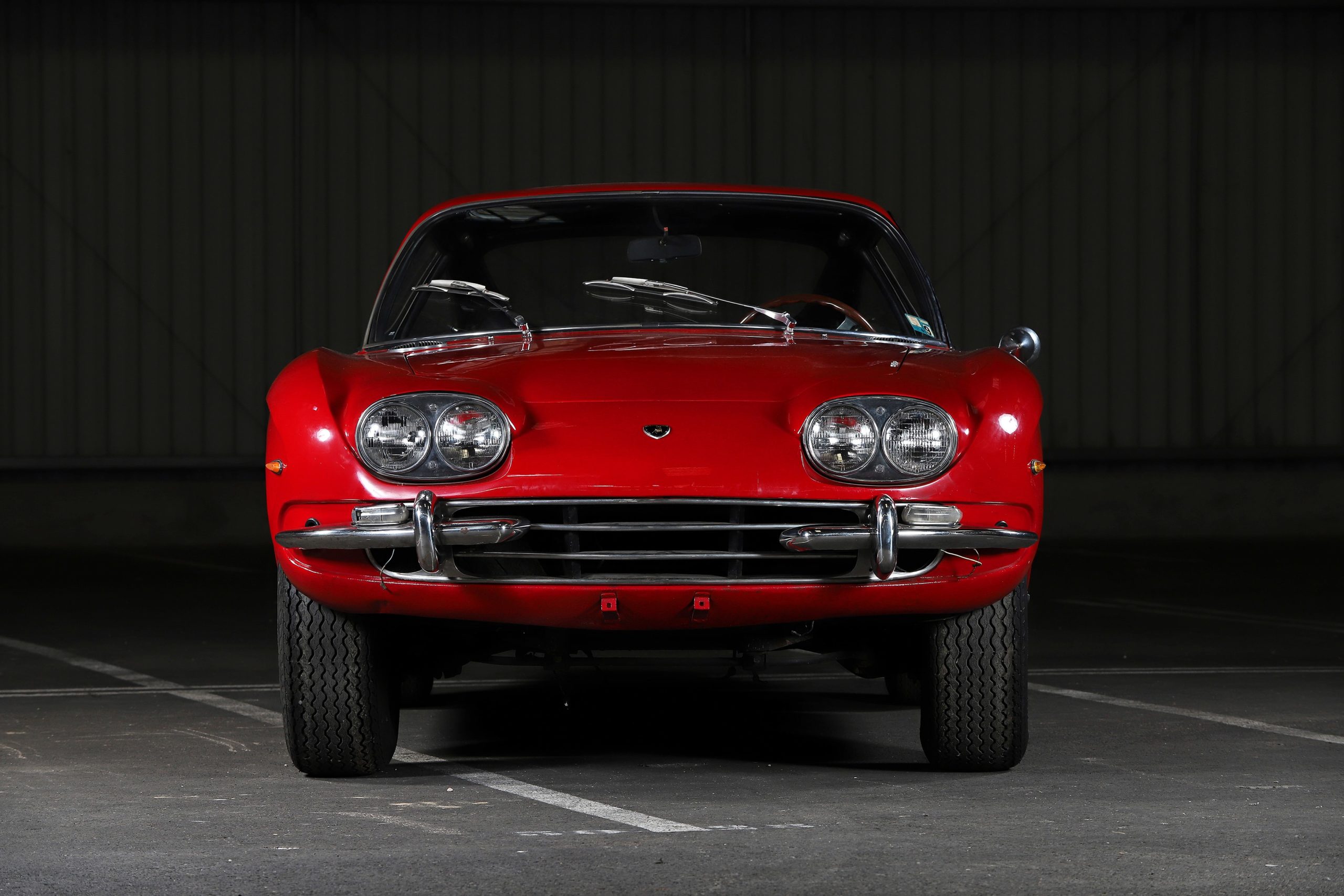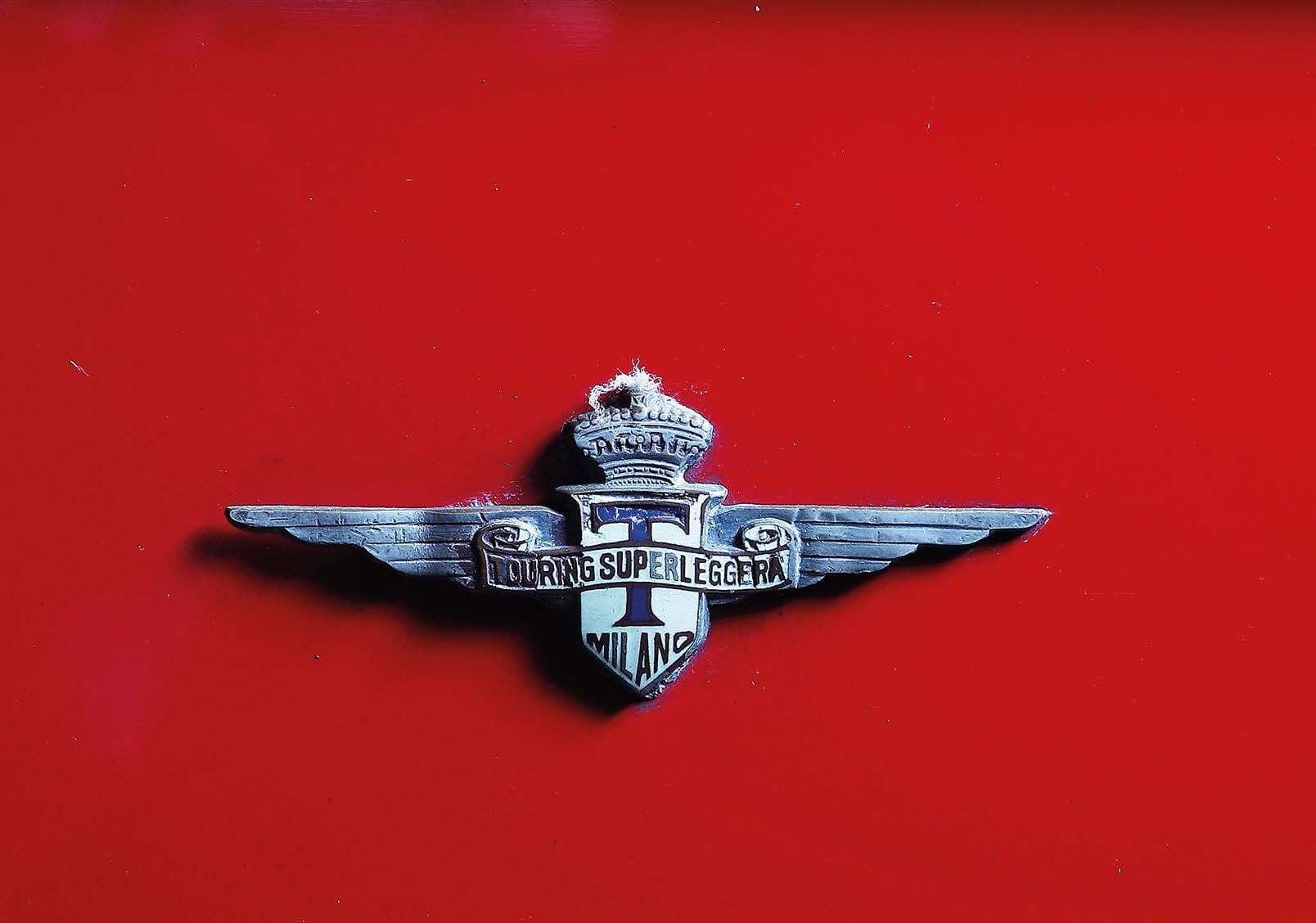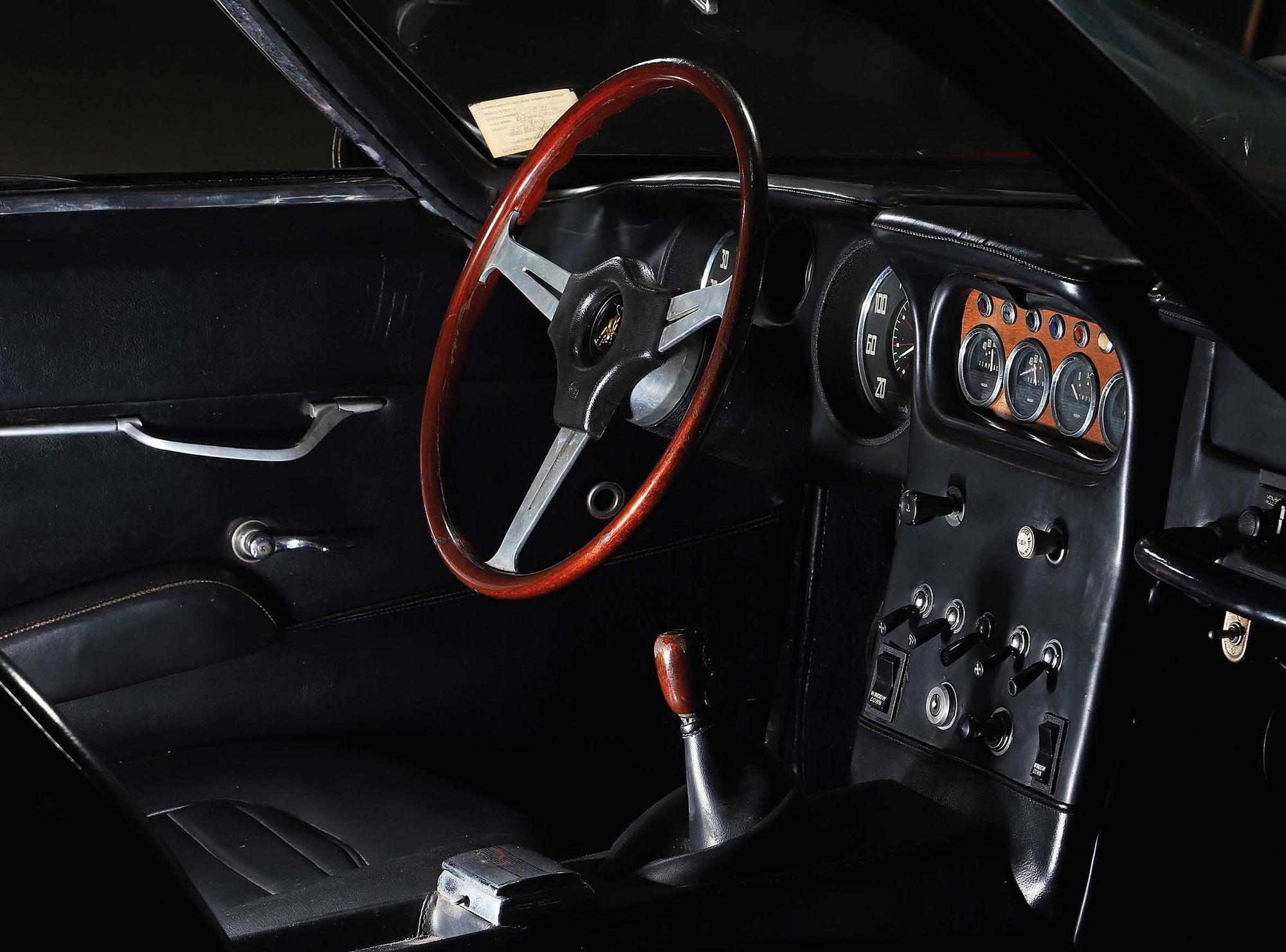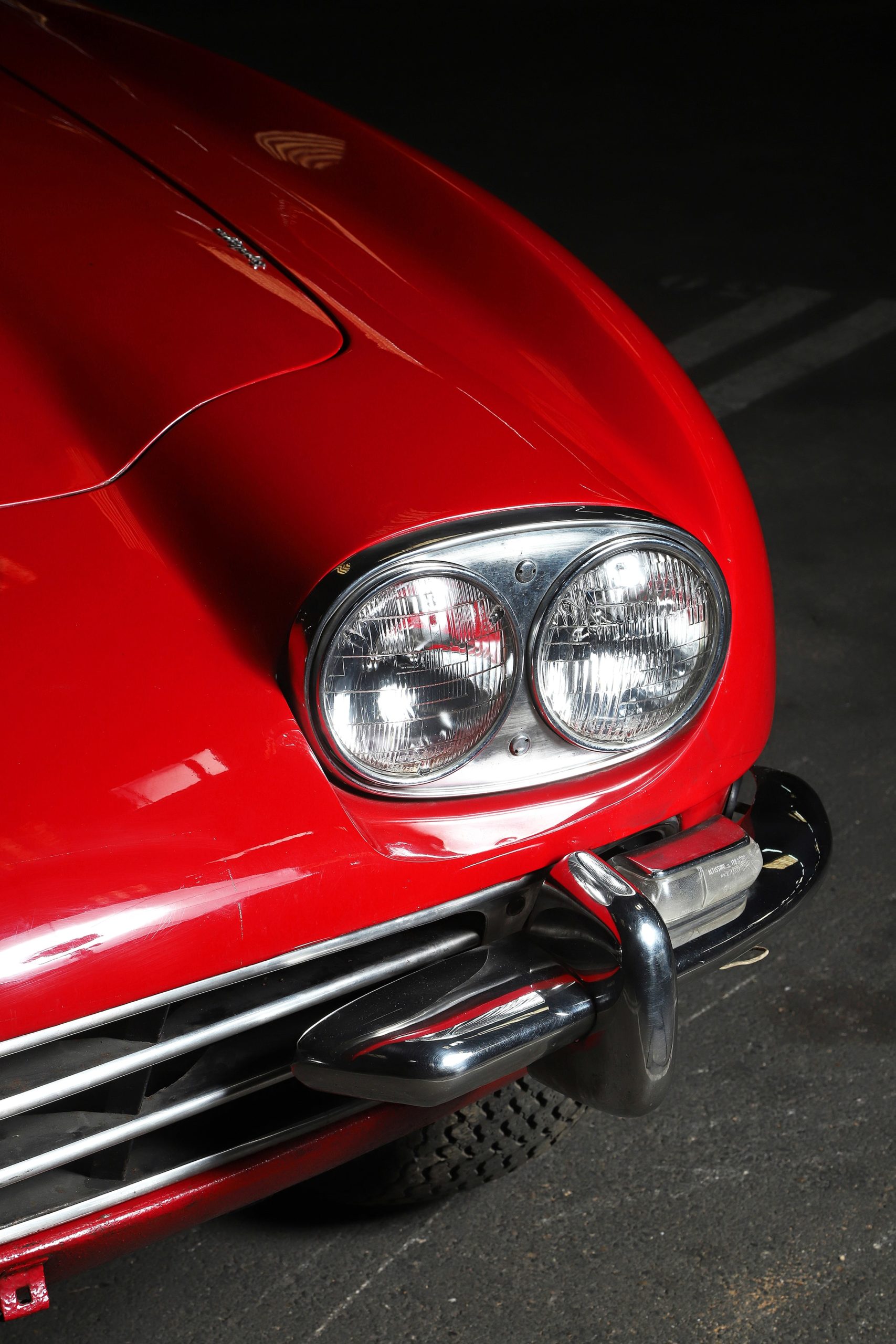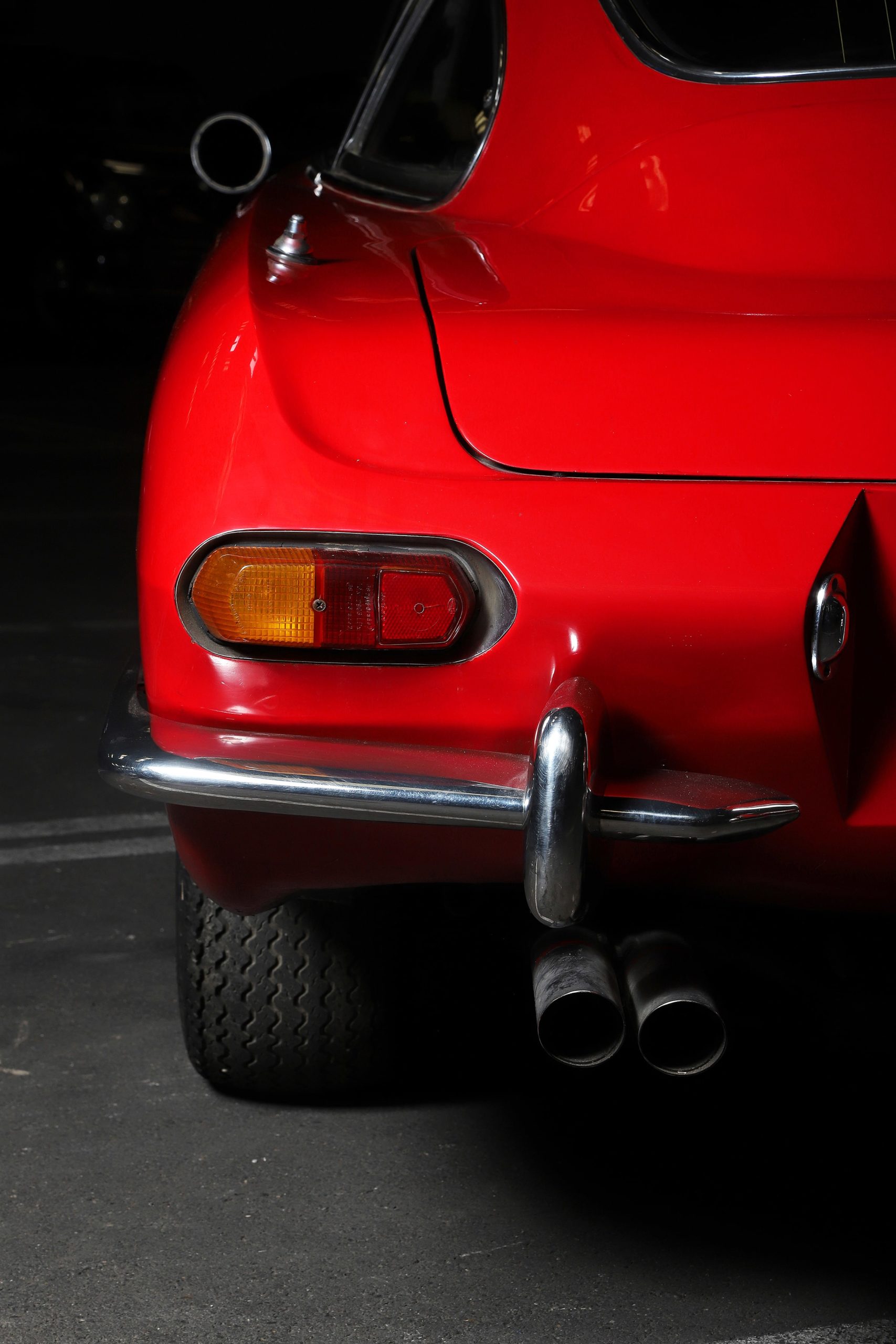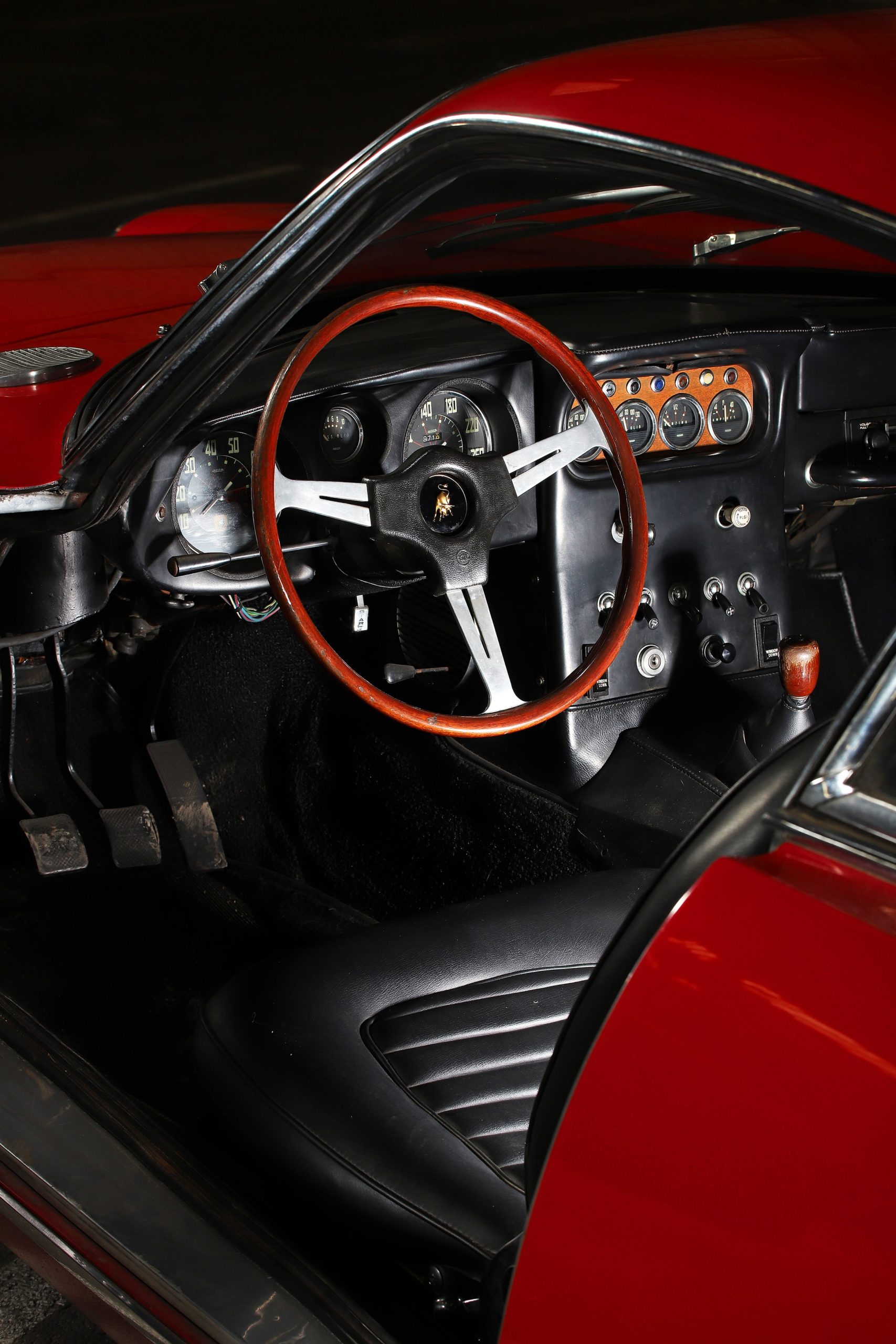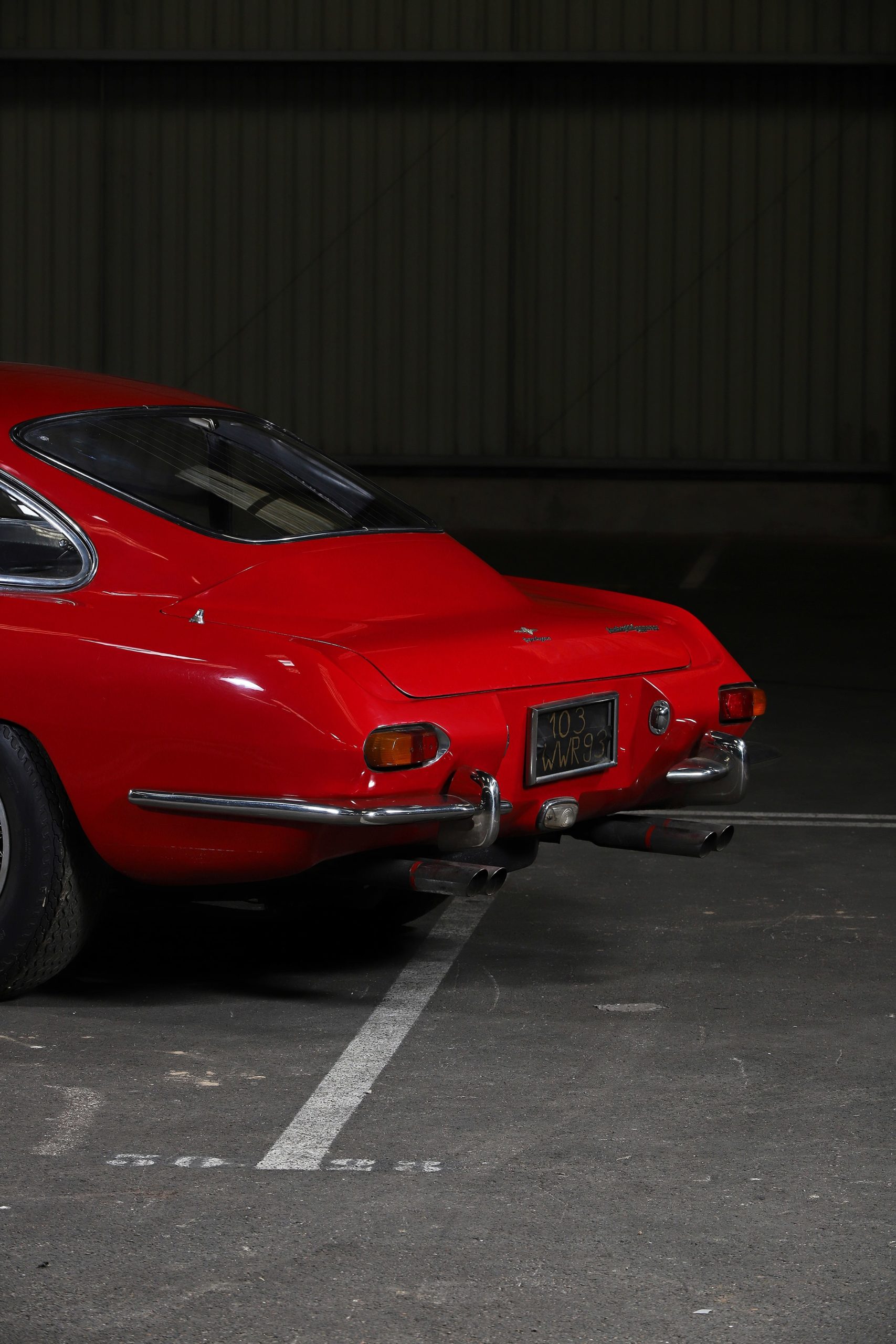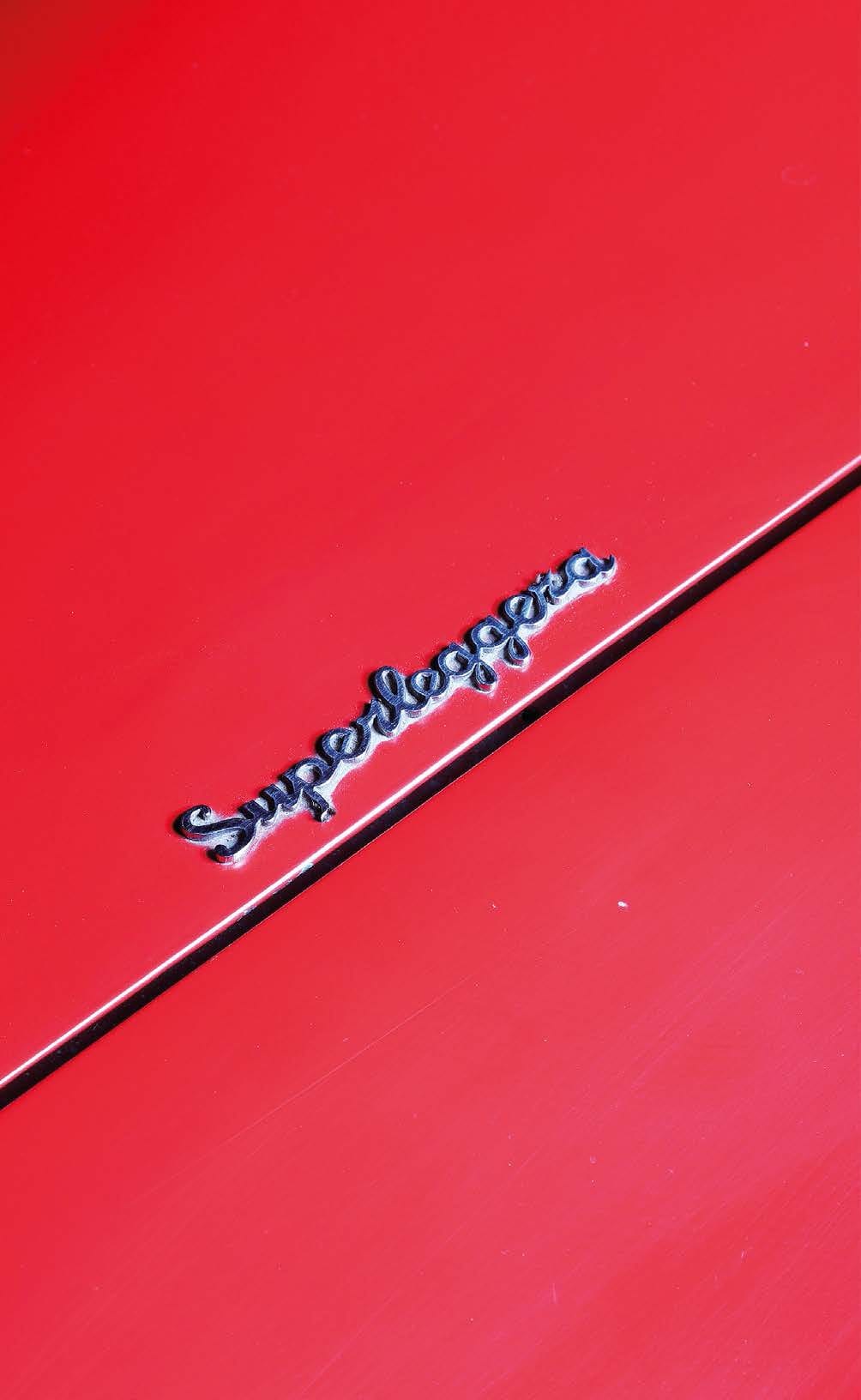Lamborghini 400 GT 2+2 - 1967
— One of the founding GTs for the Sant'Agata brand —- Model A rare car with only 247 units produced.
- History A successor to the very first production model Lamborghini in history, the 350GT
- Performance A formidable GT powered by the legendary Lamborghini V12.
- Design A true 2+2 GT with a sublime and unique design by Touring
- Our car A sound car with an engine that will need to be redone and re-installed before hitting the road again.
Connu pour son matériel de chauffage et ses tracteurs, l’industriel à succès Ferrucio Lamborghini s’était lancé un pari ambitieux : concurrencer Ferrari avec des autos encore plus performantes. La légende veut que ce pari soit né d’une remarque d’Enzo Ferrari qu’il n’avait guère appréciée. Voyant les choses en grand, c’est ainsi qu’il lança un premier prototype, la sublime 350 GTV suivie de la Lamborghini 350 GT présentée au salon de Genève de 1964 à laquelle succéda en 1966 la 400 GT 2+2. Ces GT mues par le V12 maison sont les pièces fondatrices de la marque au taureau.
A true GT with a distinctive look
The initial design of the Lamborghini 350 GT was entrusted to Francesco Scaglione, a former styling director from Bertone, who designed a first prototype presented in 1963, the superb and highly distinguished 350 GTV.
The very first Lamborghini in history was characterised by its very taut lines from which a large cockpit emerged.
Touring made the final adjustments to this design, which gave birth to the final version of the 350 GT, which was presented at the 1964 Geneva Motor Show. True to its know-how, this aluminium car was built according to the famous Superleggera technique.
While the 350 GT and 400 GT shared many similarities, its larger roof to make it a true 2+2 when the 350 GT only had two seats to offer, distinguished them both.
As for the interior, it is as luxurious as a GT of the time should be: upholstered in leather with a generous use of chrome, it was enough to seduce the most demanding customers.
The Lamborghini V12, an extraordinary symphony.
When Ferrucio Lamborghini came to compete with Ferrari, he knew that all the attention would be focused on his technical choices, and more particularly on his engine. He therefore decided to design and produce an in-house V12 engine.
This most ambitious mission was entrusted to Giotto Bizzarrini, one of the most prominent engineers in Italy. Indeed, the former Ferrari engineer was known for being the father of the V12 of the Ferrari 250 Testa Rossa and the Ferrari 250 GTO, no less.
Based on the plans of a V12 engine originally intended for a Formula 1, Bizzarrini decided to adapt it to a 3.5l displacement for the 350GT, later increased to 4l with the 400GT
Taking advantage of the lessons learned in racing where an engine goes under extreme use, Bizzarrini decided to implement dry sump lubrication. Six vertical twin carburettors housed between the four overhead camshafts fed the V12.
With an original displacement of 3,464 cc, the car developed 280 hp, all transmitted to the rear wheels via a five-speed ZF gearbox.
A state-of-the-art chassis
The chassis was the other key technical element of the car. Once again, Ferrucio Lamborghini was keen to use one of Italy’s most renowned engineers, Gian Paolo Dallara, assisted by Paolo Stanzani and future test driver Bob Wallace. With such a team of engineers, no doubt the 350 GT was in good hands!
Dallara developed a frame weighing only 85 kilos, made of a tubular trellis with a circular cross-section that was both lighter and better suspended, thanks to the four independent wheels. It was all the more remarkable as Ferrari and Maserati were only offering a rigid rear axle with leaf springs.
Weighting only 1,200 kg, the 350 GT offered an amazing weight / power ratio that guaranteed top performance: a top speed of 250 km/h and, above all, a 0 to 100 km/h done in only seven seconds!
There is no doubt that the 350 GT was well born and made a hit!
The 400GT, a spacious and very fast Lamborghini
Launched at the 1966 Geneva Motor Show, the 400GT 2+2 was more spacious than the 350GT. Its lowered floor and slightly raised roofline allowed adding two small seats in the back, making it the first 2+2 in Lamborghini’s young history. Again, such choice was made to compete with Ferrari.
The 400 GT also featured twin headlamps with dual lenses instead of the oval headlamps of the 350GT. This choice was actually imposed by American regulations, which was then by far the largest market for sporty GTs.
The changes were not only cosmetic: the V12 engine capacity was increased to 3,929 cc with 320 hp at 6,500 rpm. In fact, this 4-litre block had already appeared in 1965, finding its way into the last 350 GT, an interim model known as the 400 GT “Interim”.
While the 1966 400 GT 2+2 was more powerful, it was also 300 kg heavier due to the use of steel body parts instead of aluminium ones like in the 350 GT. Despite this added weight, the 400 GT 2+2 gained 10 km/h in top speed, theoretically reaching 260 km/h.
The 400 GT 2+2 also benefited from a new gearbox with an improved transmission. Designed in house, the Porsche-style synchromesh gearbox greatly improved the transmission.
Between 1966 and 1968, only 247 examples of 400 GTs (all models altogether), were produced, making it an extremely rare model.
At the time, Autocar magazine wrote very positive lines: “The 400 GT 2+2 is better than any equivalent GT. To achieve this level of performance without fuss, crisis or tragedy is an achievement. Considering the development time, it’s simply sensational.”
The 400 GT from the ANNA LISA Collection
Our car was sold new in Italy before being exported years later to the USA. The car then changed hands by being seen first on the East Coast in Oklahoma and Virginia, and then on the West Coast in California.
The red Lamborghini with beige interior returned to Europe in the early 1990s in Aachen, Germany before being sold at auction in late 1990.
After years of being dormant we decided to bring it back into the spotlight. The V12 engine was disassembled for a complete overhaul. The promise of hearing it screaming while driving on beautiful Italian roads is a true dream…
